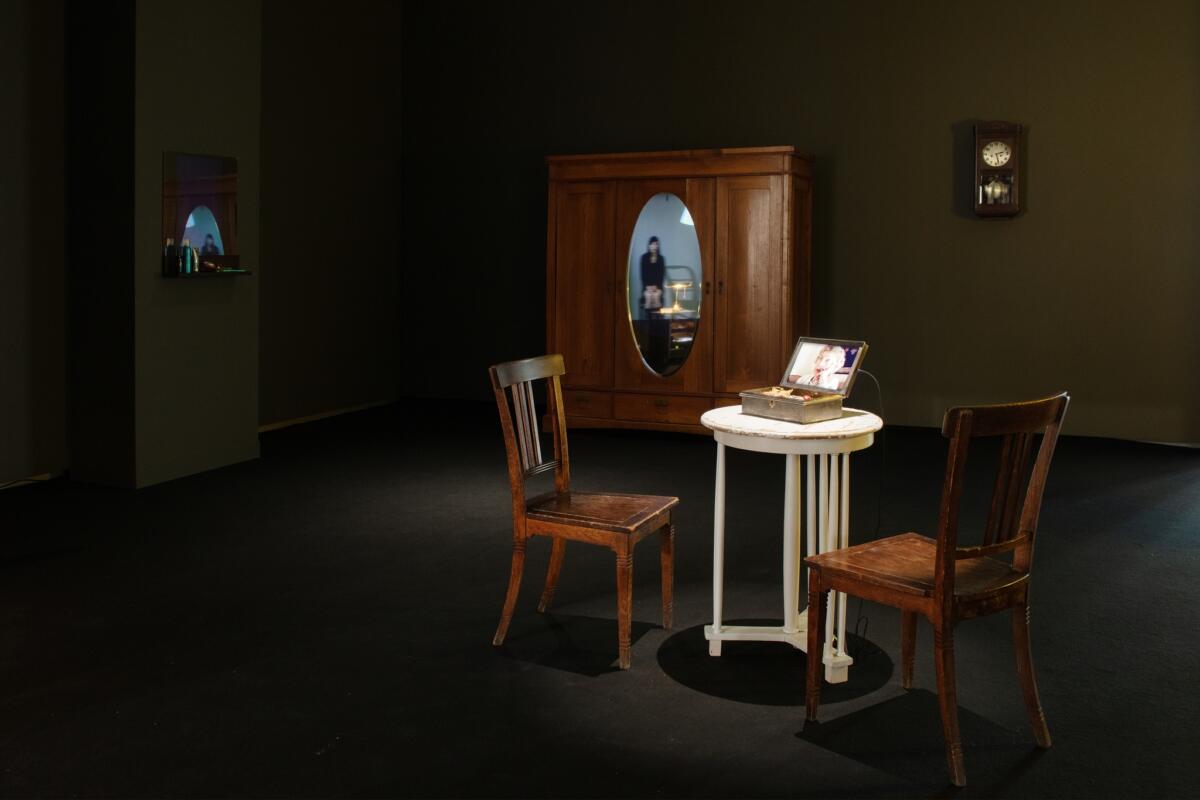
In the past decade, museums and exhibition halls across the world have been paying more attention to women-artists than ever. The idea of women’s absence from the art history of previous centuries and the necessity to re-evaluate the established and canonised art history was put forward by the 1972 article Why Have There Been No Great Women Artists? by American art critic Linda Nochlin. Feminism took the courage to set off on a critical relationship with the contemporary art world and the art history that had created a cult of art by ‘male geniuses’, marginalising women.
Following the emergence of the #MeToo movement in 2017, feministic activism has gained new energy, creating the fourth wave of feminism, which turned not only to the widespread problem of sexual harassment, but also sparked women into taking political, economic and social stance with renewed vigour. Feminism – this influential political and intellectual force – has had its own evolution in the 20th and 21st centuries and merges with other current socio-political processes. Since second wave in the 1960s, the field of feminism has branched to include ideas from cultural anthropology, philosophy, psychology, ethnology, semiotics, social anthropology, sociology of culture and art history.







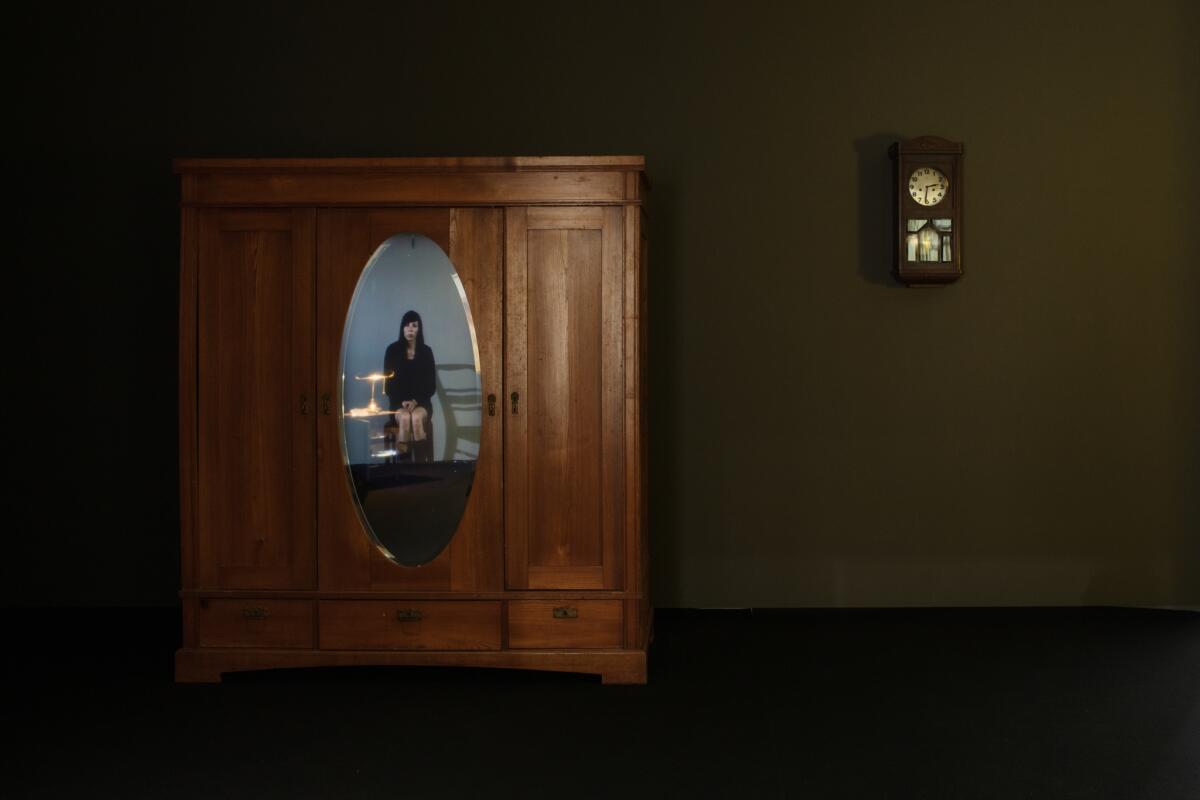
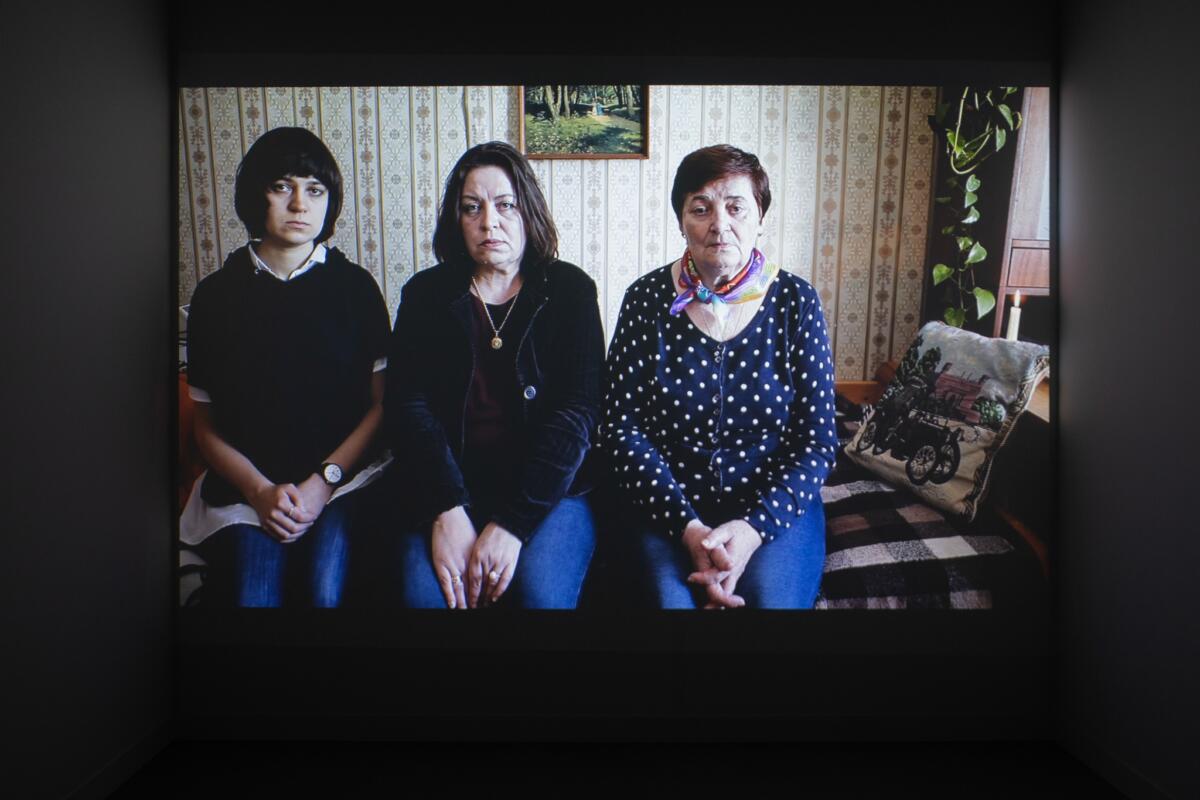








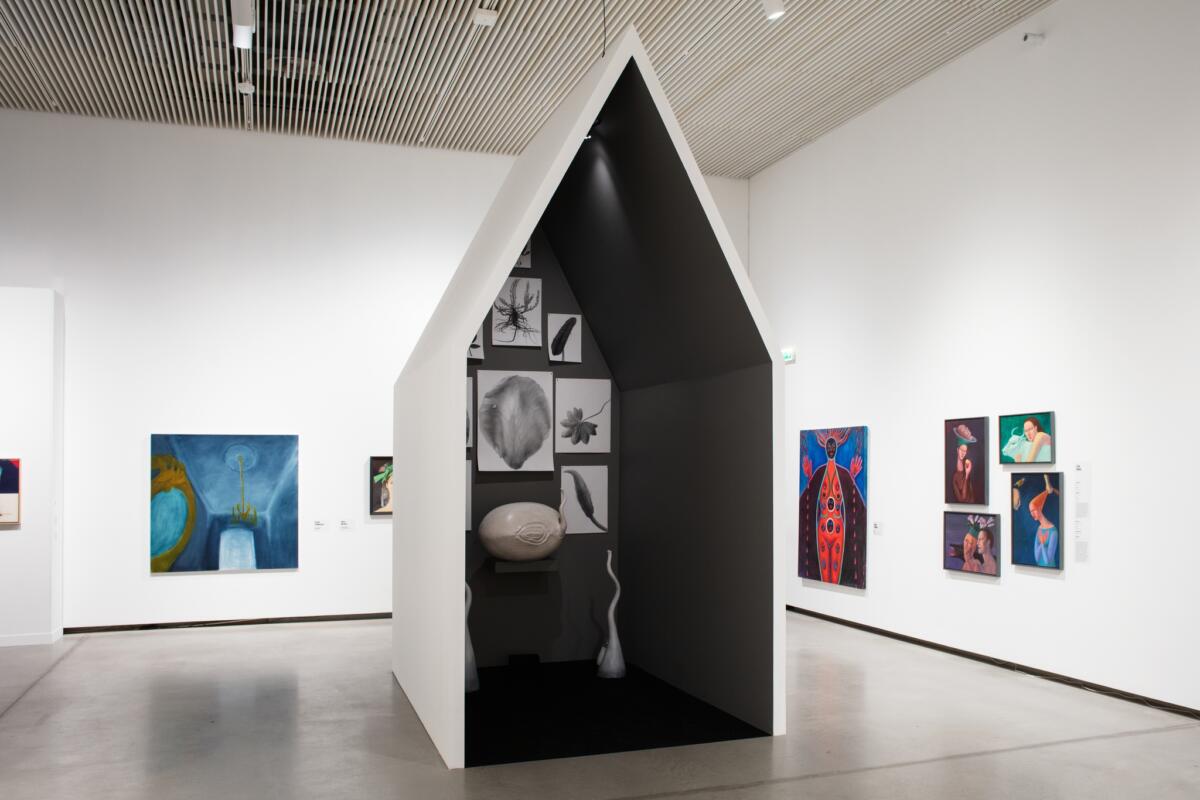
In Latvia, feminism as a conscious academic discipline only started to take shape towards the end of the 20th century. Researchers have taken up women’s history studies, gradually also building an understanding about the specific conditions in Eastern Europe that have determined the formation of women’s consciousness in the context of gender. In Latvian art, especially in recent decades, works that critically interpret stereotypes about women’s role and place in society are being created. In the preceding years however we must rather talk about a kind of latent feminism, or “feminism without feminists”, when women artists dealing with the depiction of women’s lives did not conceptualise it as a broad problematic requiring public discussion.
The exhibition Don’t Cry! looks at Latvian art from a feminist interpretation, employs gender discourse and merges into a stream of social activism giving women the voice to speak for themselves. The project’s title implies a prohibition to express emotions and hence opinion. It recalls the image cultivated during the Soviet occupation of the heroic Soviet woman who overcomes all life’s difficulties without complaining and subjects it to irony. The stigma of the strong woman and Soviet women’s misguided pride in their ability to live under harsh conditions has hindered a critical perspective towards everyday problems and a spirit of social struggle, and this psychological heritage can still be felt today.
A broad spectrum of issues related to women is reflected in eight sections of the exhibition dealing with the themes of traditional women’s work, constructed femininity, motherhood, reproductive rights, women’s genealogy, emotional politics, relationships, sexuality, women’s leadership, creative freedom, ecofeminism, and mythology.




The exhibition shows works of painting, graphic art, photography, installation and video created by almost 50 Latvian female artists – Lidija Auza, Ilze Avotiņa, Ieva Balode, Biruta Baumane, Linda Boļšakova, Elīna Brasliņa, Māra Brašmane, Daina Dagnija, Evelīna Deičmane, Biruta Delle, Kristiāna Dimitere, Lilija Dinere, Zenta Dzividzinska, Krista Dzudzilo, Dace Džeriņa, Laima Eglīte, Vika Eksta, Ieva Epnere, Helēna Heinrihsone, Ieva Iltnere, Rasa Jansone, Kristīne Keire, Frančeska Kirke, Sandra Krastiņa, Ieva Kraule-Kūna, Maija Kurševa, Sarmīte Kviesīte, Liene Mackus, Anda Magone, Sarmīte Māliņa, Anita Meldere, Inga Meldere, Katrīna Neiburga, Ingrīda Pičukāne, Monika Pormale, Līga Purmale, Inta Ruka, Mētra Saberova, Skuja Braden (Ingūna Skuja, Melissa Braden), Olga Shilova, Rasa Šulca, Maija Tabaka, Diāna Tamane, Sabīne Vernere, Hilda Vīka, and Aija Zariņa – starting from the 1960s and up until newly commissioned works completed in 2023.
Along with the exhibition, a catalogue in Latvian and English is published. Feminist interpretations of Latvian art are discussed in the articles of Elita Ansone, Jana Kukaine and Rasa Jansone. In the reproduced works of art, you can get to know the works of female artists in the period from 1965 to 2023.
Text by Elita Ansone














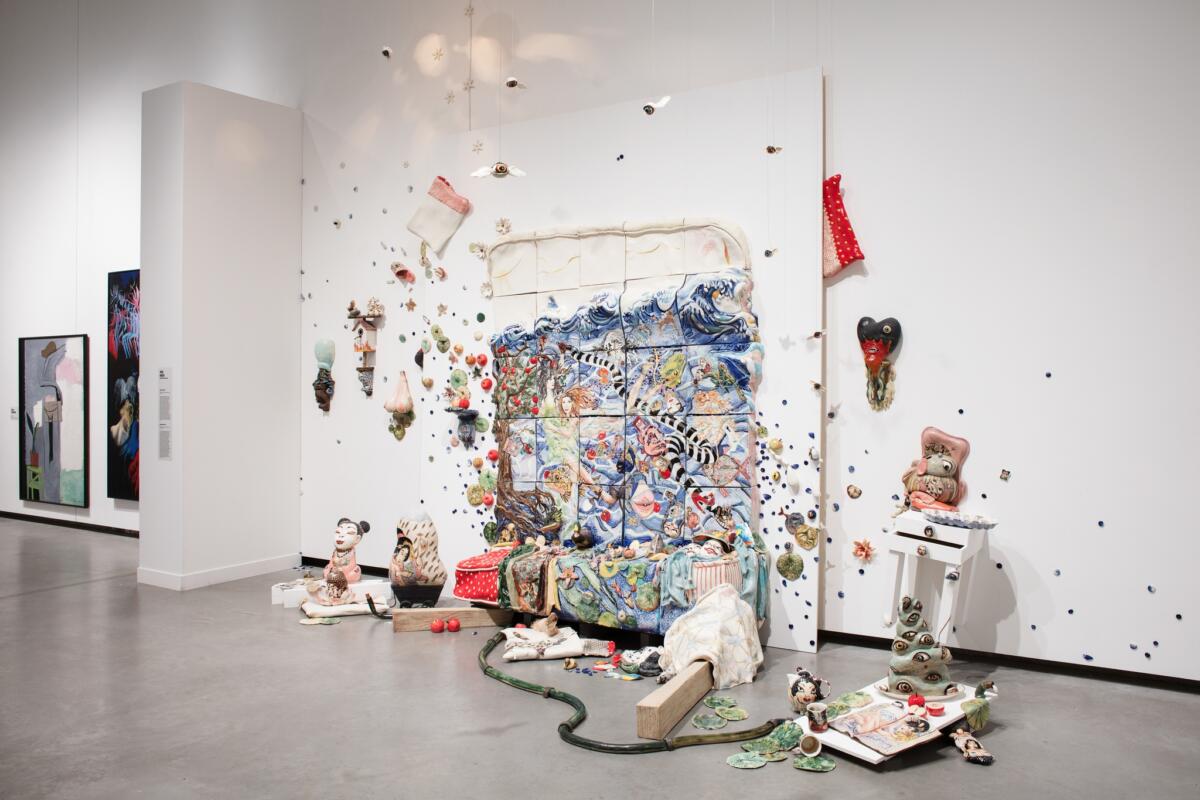



Imprint
| Artist | Lidija Auza, Ilze Avotiņa, Ieva Balode, Biruta Baumane, Linda Boļšakova, Elīna Brasliņa, Māra Brašmane, Daina Dagnija, Evelīna Deičmane, Biruta Delle, Kristiāna Dimitere, Lilija Dinere, Zenta Dzividzinska, Krista Dzudzilo, Dace Džeriņa, Laima Eglīte, Vika Eksta, Ieva Epnere, Helēna Heinrihsone, Ieva Iltnere, Rasa Jansone, Kristīne Keire, Frančeska Kirke, Sandra Krastiņa, Ieva Kraule-Kūna, Maija Kurševa, Sarmīte Kviesīte, Liene Mackus, Anda Magone, Sarmīte Māliņa, Anita Meldere, Inga Meldere, Katrīna Neiburga, Ingrīda Pičukāne, Monika Pormale, Līga Purmale, Inta Ruka, Mētra Saberova, Skuja Braden (Ingūna Skuja, Melissa Braden), Olga Shilova, Rasa Šulca, Maija Tabaka, Diāna Tamane, Sabīne Vernere, Hilda Vīka, Aija Zariņa |
| Exhibition | Don’t Cry! Feminist Perspectives in Latvian Art: 1965–2023 |
| Place / venue | Latvian National Museum of Art |
| Dates | 15 July – 15 October 2023 |
| Curated by | Elita Ansone |
| Exhibition design | Zane Putniņa, Anna Ceipe |
| Website | www.lnmm.lv |
| Index | Aija Zariņa Anda Magone Anita Meldere Anna Ceipe Biruta Baumane Biruta Delle Dace Džeriņa Daina Dagnija Diāna Tamane Elīna Brasliņa Elita Ansone Evelīna Deičmane Frančeska Kirke Helēna Heinrihsone Hilda Vīka Ieva Balode Ieva Epnere Ieva Iltnere Ieva Kraule-Kūna Ilze Avotiņa Inga Meldere Ingrīda Pičukāne Inta Ruka Katrīna Neiburga Krista Dzudzilo Kristiāna Dimitere Kristīne Keire Laima Eglīte Latvia Latvian National Museum of Art Lidija Auza Liene Mackus Līga Purmale Lilija Dinere Linda Boļšakova Maija Kurševa Maija Tabaka Māra Brašmane Melissa Braden) Mētra Saberova Monika Pormale Olga Shilova Rasa Jansone Rasa Šulca Riga Sabīne Vernere Sandra Krastiņa Sarmīte Kviesīte Sarmīte Māliņa Skuja Braden (Ingūna Skuja Vika Eksta Zane Putniņa Zenta Dzividzinska |
